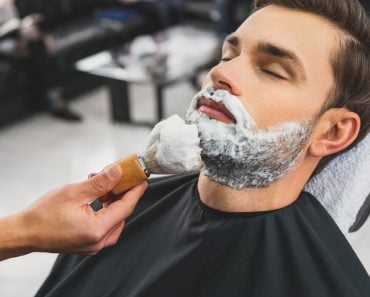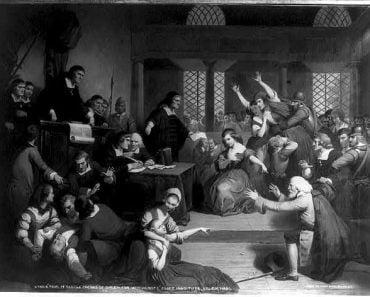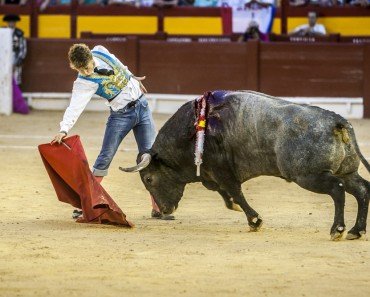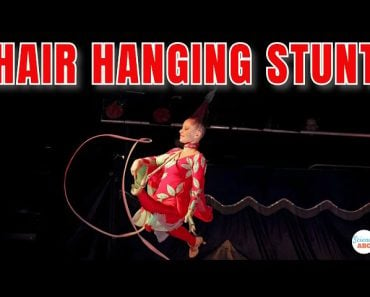Table of Contents (click to expand)
The wigs in the courtroom sought to add to the prestige of the court and differ the wearers from those who approached the law.
You’ve probably laughed at the makeup and wigs in period films, or, if you’re motivated enough and have a bone to pick with the legal profession, you may have ridiculed the absurd attire donned by barristers and judges in UK courts.
Perhaps it’s time to frame some of those jokes in their proper history…
Recommended Video for you:
How Did England Distinguish Its Judges?
It seems that a strong judiciary often has a strong sense of fashion. In the 14th century, this style happened to be a long robe, a cowled full hood that would fall on and cover the shoulders, and a cloak. The inspiration behind this look was the dress code one was supposed to follow while attending the royal court to see the monarch.
In 1635, a guide was published in the Judges’ Rules that formalized appropriate court dress. According to this guide, the correctly dressed judge was one who wore a black robe faced with miniver (a light-colored fur) in winter, and violet or scarlet robes, faced with shot-pink taffeta, in summer (they were quite specific about color palettes and tones).

The black silk gown, which we might recognize from modern times, only came around with a change of court. When the High Court was made in 1873-5, through Judicature Acts, it absorbed the functions of quite a few existing courts, including those of Chancery, Probate, Matrimonial Causes and Admiralty. These judges had already been wearing black gowns, and this continued in the newly formed court. These gowns remain the accepted and excepted mode of dress in most courts today.
How Did The Tradition Of Wearing Wigs Start?
Funnily enough, the tradition of wearing wigs was started in France by Louis XIV in the middle of the 17th century. The balding effect of syphilis had made wigs both a fashion choice and a necessary cover up. Until the 17th century, however, lawyers in England were expected to have short hair and beards, in order to look clean and polite.
Wigs only “wiggled” their way into courtrooms because the rest of polite society in Charles II’s court was wearing them. Since the judges’ attire mimicked the dress codes of the monarch’s court, the wig inevitably joined their courtroom accoutrements.

Obviously, the grandiose (and perhaps awkward) nature of wigs made them a hard sell, and judges took a while to get used to them. With good reason, though, the solemn proceedings of the court could not be subjected to anything and everything that was deemed in vogue outside its walls.
Are Wigs Still Worn?
By the end of the 18th century, wigs were going out of fashion (for good reason) outside of courtrooms. Eventually, their use became restricted to specific professions, one of which was the law.
At this time, we should distinguish between the two kinds of wigs judges were supposed to wear: bench wigs, which were fully curled at the top, short, with horizontal curls; and full-bottomed wigs, which were longer. The latter were the dress worn until the 1780s, after which, the former took “precedence” in day-to-day wear, while the latter became mostly ceremonial.

Why Were Wigs Worn?
The reason is simple. The legal system in England is one that relies on formal procedure, precedent, active lawyering, in-court case presentations and progress. All of these motivated the use of wigs to continue, especially as the rest of the legal attire toned down from pinks and lilacs to a less eye-catching black.
The barristers and judges also wanted to adhere to the formality of a uniform, a ceremonial aspect that added to the prowess and supremacy of the law, something that distinguished them from everyone else in the court. Since the precedent in court attire was one that involved wig-wearing, the practice never really died out.
It has, however, faded considerably today. Wigs in family or civil courts are no longer the norm, and many times, the judges have discretion, and the lawyers can choose for themselves whether or not to wear a wig. They are still regularly worn in criminal proceedings though, so all is not lost.

Conclusion
Wearing wigs in the courtroom was an attempt to add to the prestige of the court and differ the wearers from those who approached the law.
Barristers and judges in the UK, unlike those in the rest of the world, have gone one step beyond the black robe and white collar by regularly wearing wigs. Depending on who you are, you may love or hate this tradition (I, for one, love the dramatic aspects of the law). However, the idea and custom behind separating the enforcers and agents of the law from those who come under its scrutiny with formal visible distinction in attire is still a relevant consideration, and a tradition that is likely to continue.
References (click to expand)
- History of Court Dress - Courts and Tribunals Judiciary. Judiciary.uk
- Yablon, C. M. (1995). Judicial drag: an essay on wigs, robes and legal change. Wis. L. REv., 1129.
- Megarry, R. (1982). Barristers and Judges in England Today. Fordham L. Rev., 51, 387.
- Robson, R. (2021). Why Don't We All Just Wear Robes?. JCR & Econ. Dev., 34, 179.
- Schoff, G. (2016). Farewell to the wig. Victorian Bar News, (159), 38–40













